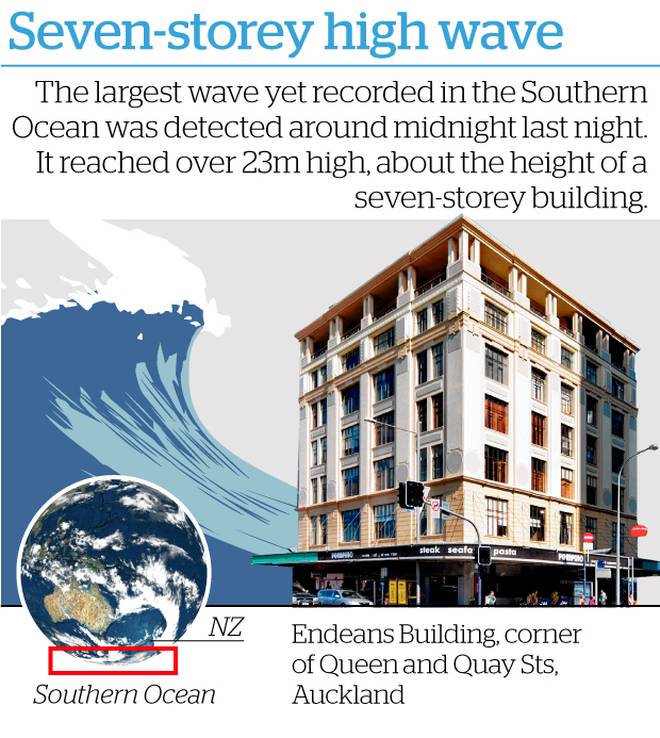A massive storm in the wild and windy Southern Ocean has just produced the biggest wave ever recorded there - reaching higher than even a seven-storey building.
The 23.8m-high monster wave was detected around midnight by a buoy operated by science-based consultancy MetOcean Solutions, and recently deployed near subantarctic Campbell Island by the HMNZS Wellington.
MetOcean Solutions senior oceanographer Dr Tom Durrant said the wave was the highest he and his colleagues had even seen.
The wave formed in the middle of a huge and deep storm, in a part of the planet where persistent westerly winds and an unlimited area for waves to build combined to make the largest in the world.
The latest wave surpassed a 19.4m wave recorded in the area in May last year by another MetOcean Solutions that had since broken from its buoy.
It was recorded as a "significant wave height" - the average measurement of the largest third of waves - and was something that corresponded well to our own visual estimates of wave height.

By comparison, 25m is the height of 16 cars stacked on top of each other, or an eight-storey building.
During the depths of winter, Southern Ocean waves are enormous, with significant wave heights averaging more than 5m, and regularly exceeding 10m.
As midnight's reading showed, individual waves could more than double that size.
Accurate measurements of these conditions will help researchers understand waves and air-sea interactions in these extreme conditions.
This would turn would lead to improvements in the models used to simulate the waves, providing better forecasts, both for the Southern Ocean and for the wider region.
Durrant said waves more than 20m high were highly hazardous to vessels.
In a dramatic video, waves which reached 16m were seen to crash over the bow of the offshore patrol vessel HMNZS Otago as it returned from a Southern Ocean patrol in 2015.
Ships tended to negotiate heavy seas by sailing head-on into the direction the waves were coming from.
But, particularly in the Southern Ocean, this could prove challenging when vessels faced long, large swells from one side and shorter, steeper seas from another.
Fortunately, there was little shipping traffic in the Southern Ocean; what vessels were operating ranged from icebreakers and research boats to fishing vessels and small cruise liners.












